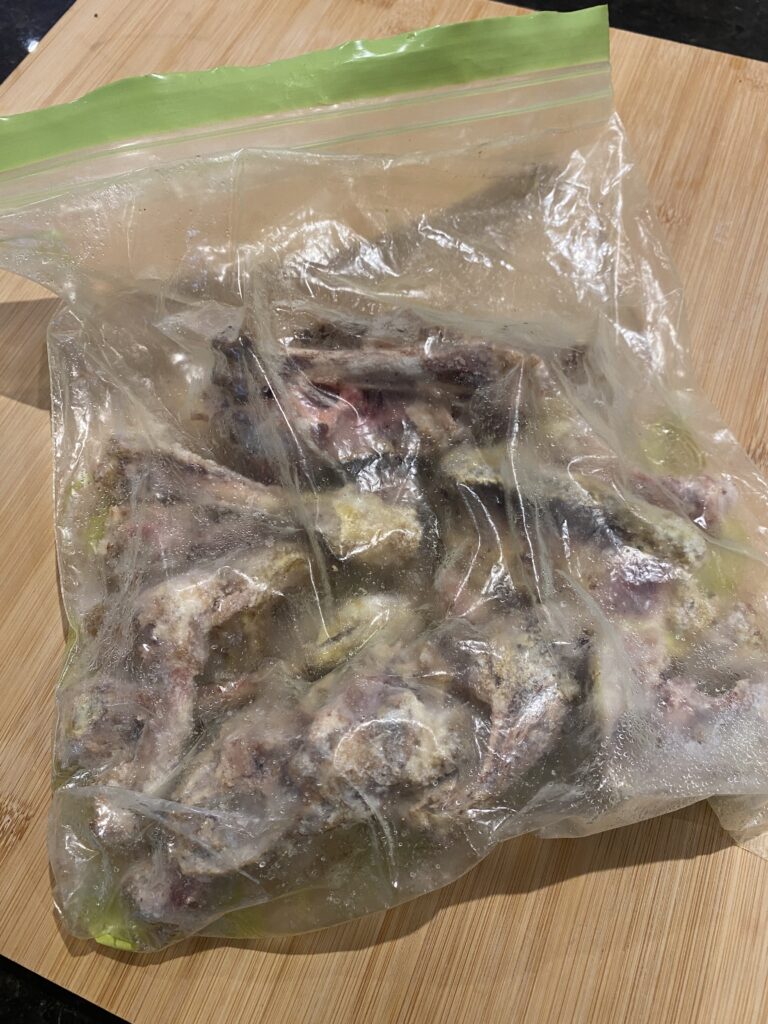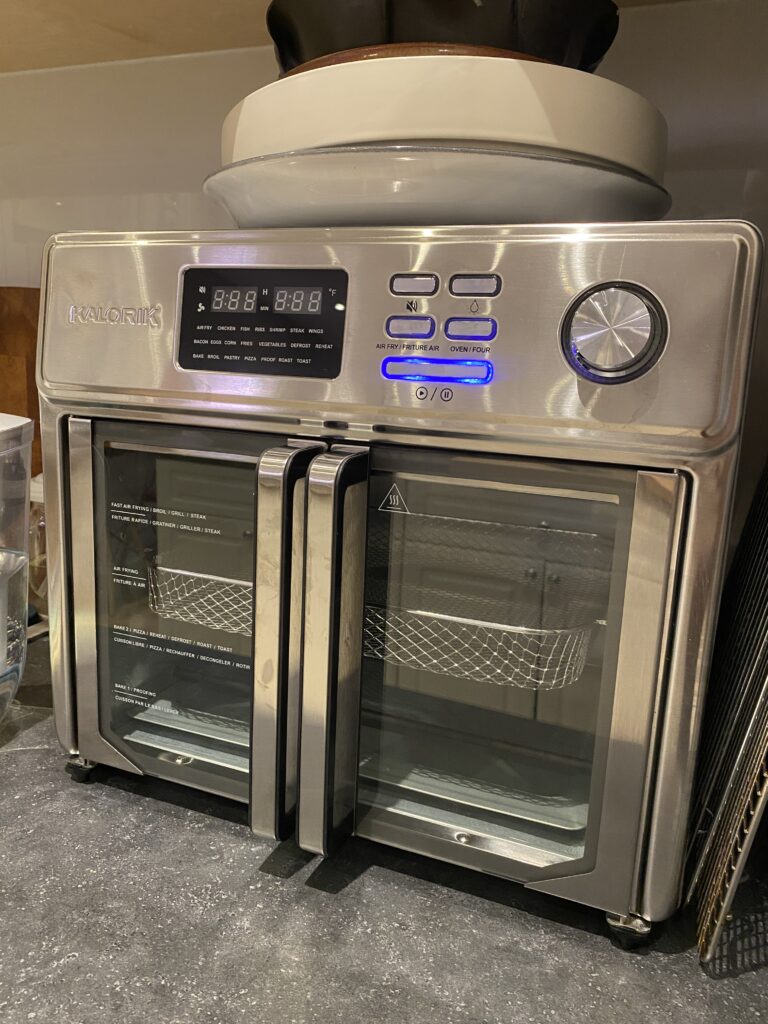I wrote part one in 2022, back before North America was mired in scandals of grocery companies jacking up the cost of everything and blaming inflation while reporting record profits. So the cost of food is higher than ever, and it seems like our governments are unable or unwilling to stop it. And because food is one of those things we can’t live without, I figured that some items of my post could use a bit more of a deep dive. I haven’t changed much of how I shop, mostly because my financial situation has fortunately been very stable, but I still have a mindset of frugality. So here’s some more tips on how to save.
If there’s one thing I want you to take away from this blog, it’s this fact of life:
You’re Gonna Pay Something
You’re always going to pay one way or another. Whether it’s money, time, or stress and frustration. If the mysterious engine light comes on, you can choose to get your car fixed at an expensive, but well respected mechanic that handles it in an afternoon. Or you can go to the shady garage that only takes cash, but takes 3 days and when you get your car back, there’s a new weird sound coming from the engine. When it comes to food, if you want something tasty, you’re going to spend either time or money. Borrowing from a freelancer’s mantra: things can be cheap, fast, or good. Pick 2. Since I insist on everything I make tasting good, we’re going to focus on taking your time to save money. If you’re someone who doesn’t have a lot of time, there’s some tools at the end of the article that could help.
Saving on Meat: Slow, Low, and Under Control
If you don’t eat meat, congrats! You save money, it’s better for the environment and arguably better for your health. I’ve tried to cut it out of my diet, but I find that eating vegan (dairy allergy) makes me entirely too sad/angry all the time. So for my own mental health and EVERYONE’S SAFETY, I eat meat.
If you go to the meat section of your grocery store, you’ll want to look at the price per pound/kilogram. We’re going for value here, not just price. The cheaper cuts are going to be things that are not super popular, or deemed “unhealthy”. But the joke’s on them. In Canada and the US, there’s accepted wisdom that fat makes you fat so leaner cuts of things will be expensive, despite being objectively less tasty. I’m talking about your chicken breast and lean beef. These also tend to be cuts that cook in minutes, so they’re great for whipping up quick meals. One thing that I’ve noticed is that beef is consistently more expensive than other choices. I’ll generally stay away from it altogether except for a treat steak every few months. In which case I’ll get whatever is the most marbled (cheaper sometimes) and do the reverse sear method to get the best out of it.
The cuts I most commonly purchase are:
Chicken Legs

Chicken legs have both the thigh and drumstick attached. They cook relatively quickly in the oven and require very little supervision that way. I usually season them, marinate for up to a day (if I have time), and then cook them in the toaster oven at 350ºF for 30-ish minutes until they’re cooked (aka give them a poke and see if the juices run clear). If you’re a meal prep type of person, you can cook a ton of these, wait for them to cool, then strip the meat off the bones and chop them into portions.
For less wastage you can save the bones in a terrifying-looking ziploc bag in your freezer for making broth.
Pork Shoulder
Often called pork butt, or picnic, or pork shoulder. This comes in a big hunk that requires a lot of cooking time to become tender. You can cut a ton of active cooking time by using a pressure cooker or slow cooker, which I’ll expand on later. Jamie Oliver has a great recipe for this that roasts it whole for six hours. I’ll often make carnitas or super meaty bolognese/ragu sauce.
Cut Close to the Bone

If the metric tons of chicken legs and wings I eat weren’t any indication, I’m a HUGE fan of skin-on, bone-in meat. Otherwise, you’re paying for someone to take the skin off and debone the thing. You’re literally paying more for less. Skin is where the fattiness and crispiness lives. And if you come from a culture similar to mine (Chinese), SOME FAT IS NOT BAD FOR YOU. It tastes great and keeps you fuller for longer. It’s why restaurant food often takes so much better than homemade. The amount of fat and salt they put in dishes would feel criminal to do at home. Bones keep the surrounding meat from overcooking too easily, and along with tendons and joints inject collagen into your food. That’s the stickiness that you get from things like ribs and chicken wings. And if you’re to believe my mom, it’s also what keeps your skin elastic and young looking. If you need any evidence of this, I’m 43 years old and got carded for buying booze twice a couple days ago at a concert.
The cuts I buy the most (not including chicken legs) are:
Pork Neck Bones
These are most often found in Asian grocery stores, but you might be able to find them in the “other meat parts” section of a more typical store. The section that might have pigs ears and chicken hearts. If you don’t see them, you might also be able to ask a butcher for them. This cut has tons of flavour and quite a bit of meat. I use these to make Korean pork bone stew or the base of a simple soup with a bunch of veggies like carrots and onions. I’ll usually cook it until the meat is falling off the bone, then pull the bones and meat out, toss the bones, then chop up the meat and put it back in the soup. I ALWAYS have some pork bones in my freezer. I look for the meatiest packs I can find.
Beef Neck Bones
I’ve been using these as a cheaper version of oxtail. They’re not as meaty, but for the price you pay, it’s worth it. The taste is close enough for any recipe I make with them, though the bones can be small and sharp, so you really need to pay attention to get everything when you’re taking the bones out. I’ll braise these to make spaghetti sauce or Jamaican oxtail stew. Just make sure the people eating it are okay with finding the errant bone fragment, which is harder to weed out in a thick sauce.
Pig’s Feet/Trotters
This is where we start getting into cuts that are popular with cultures that really had to make do with whatever they could get their hands on. I love love love these. They’re tasty, fatty, and meaty. I prefer the Chinese way of cooking these, though lots of other cultures have their own method. This is a great example of dishes that people tend to turn their nose up at, since there’s this idea of things that get a lot of ground action being dirty (I’m not even going to cover offal in this post). They clean it before selling, it, people! But as the skyrocketing cost of chicken feet has shown us, the difference between disgusting and delicious is all marketing. Thanks for nothing, health influencers and your bone broth obsession. What used to be one of my favourite cheap dishes (chicken feet soup) has become a bit of a splurge.
Fish Heads

Possibly the most controversial choice, this is one of my favourite things to make. For those who are squeamish about bones in general, anything with a face is usually out.
I used to make this one dish that required a white fish head. I’d coat it with cornstarch, fry it in oil, then braise it in ginger, garlic, green onion, soy sauce, cooking wine, and water. But for whatever reason white fish heads have been super pricey lately. Like over $15 for one, which is WILD.
For more mysterious reasons, salmon fish heads remained relatively plentiful and inexpensive. For those, I’ll usually make a thin teriyaki sauce for braising and eat it over rice. I enjoy food that makes me slow down, and eating meat off a salmon’s skull takes a while. Because these fish are really big, there’s a surprisingly large amount of meat on them. Also, TONS of fatty collagen. This is usually a dish I eat alone, because it’s so labour intensive and you know. The whole face thing.
Get Veggie with it: Take A Pulse
Moving on from meat, we go to beans and legumes. In this site I talk a lot about canned beans, as they’re pretty easy to get, cheap, and full of nutrients and protein. But you know what makes them even cheaper? BUYING THEM DRY. Dried beans come at a fraction of the cost, but they take time. I’ll be honest, I’ve only really started cooking more with dried beans, and I’m certainly not confident enough to post any recipes that I’ve made. All I know is that you can make great curries with chickpeas, Mexican-style black beans that go great with everything, and my latest fascination – cooking the ever living hell out of fava beans in veggie stock and blending them to make a creamy soup base.
The thing that’s got me making more beans lately (other than the fact that they’re super tasty) is the fact that I have an Instant Pot. Whether I was cooking beans in a pot or pressure cooker on the stove, or in the oven, I just couldn’t figure it out. Even if I soaked them all day, they would come out underooked. The Instant Pot fixed that. So let’s talk equipment.
The Right Tools for the Job
The right appliances will speed the whole cooking process up for you, whether that’s a decent hand blender for soups and sauces or a good processor for chopping up salsa. I have two pieces of equipment that get used every day in one capacity or another.
Slow Cooker/Pressure Cooker
These things free up hours of active cooking time. You can take 10 minutes to throw together ingredients for congee, chilli, or curry into a slow cooker the night before and have it ready in the morning in time to pack for lunch. I’ve also put a pot roast with veggies in the morning to have a full, balanced dinner waiting for me after work. A pressure cooker makes a several-hour braise (looking at you, carnitas) into 30 minutes. I have an instant pot that has a lot of functions, including slow cooking and pressure cooking, so I don’t have two relatively large appliances taking up room in my kitchen.
These things can be pricey, so if you’re really on a budget, you can usually find these second hand at a thrift store or Facebook Marketplace. Or just ask around. There’s likely people in your circle who have been gifted a slow cooker they never use and want to free up closet space.
Toast Oven/Air Fryer

I cannot live without a toaster oven. I’ve always owned one. If I had to, I could probably live with just a hot plate and toaster oven. If you’re someone who doesn’t need to consistently cook for a crowd, if you pay your own electricity bills, or if you live somewhere hot, then a toaster oven is your friend. A big enough toaster oven can cook 3-4 chicken legs in one go and takes a fraction of the time and energy required to heat up a whole oven. Making enough roasted brussels sprouts for two? NO PROBLEM. And ever since I got one with an air fryer (used to be called the “convection”) setting, I’ve been able to cut cooking time down even more. There’s some science to it, I don’t know what it is.
Also, the things make toast. So you don’t need a toaster, either. It’s just… just get one.
Final Thoughts: Set Yourself Up for Success
Think Before you Act
With the right amount of foresight and planning, you can save both time and money on preparing food. It’s easy to waste time if you have to run back and forth to the grocery store because you forgot this or that for a recipe. You can waste money if you gave yourself zero time to even get groceries and need to get takeout. On a micro level, a sharp knife can make chopping faster and safer (cutting hours of waiting in the emergency room). A pressure cooker is an initial investment that can save hours of prep time in the future. I make a big deal about planning in the first post I wrote on this topic.
Know Thyself
It’s important to be realistic. Take stock on how you’re spending your time, whether it’s on work, travel, familial and social obligations, etc. You can’t make more time, you can only move things around. And sometimes, even that’s not possible. Also, really think about the portions and types of food that make you feel satisfied. I could eat endless soups and salads and still feel like I’m missing something. But if I add in a bit of fatty meat, I’m good.
What works for you and your lifestyle is going to be different from everyone else, so take notice of your patterns and use that as a starting point. There’s no awards given out for people who beat themselves up for being “imperfect”. Just do the best you can, and good luck!